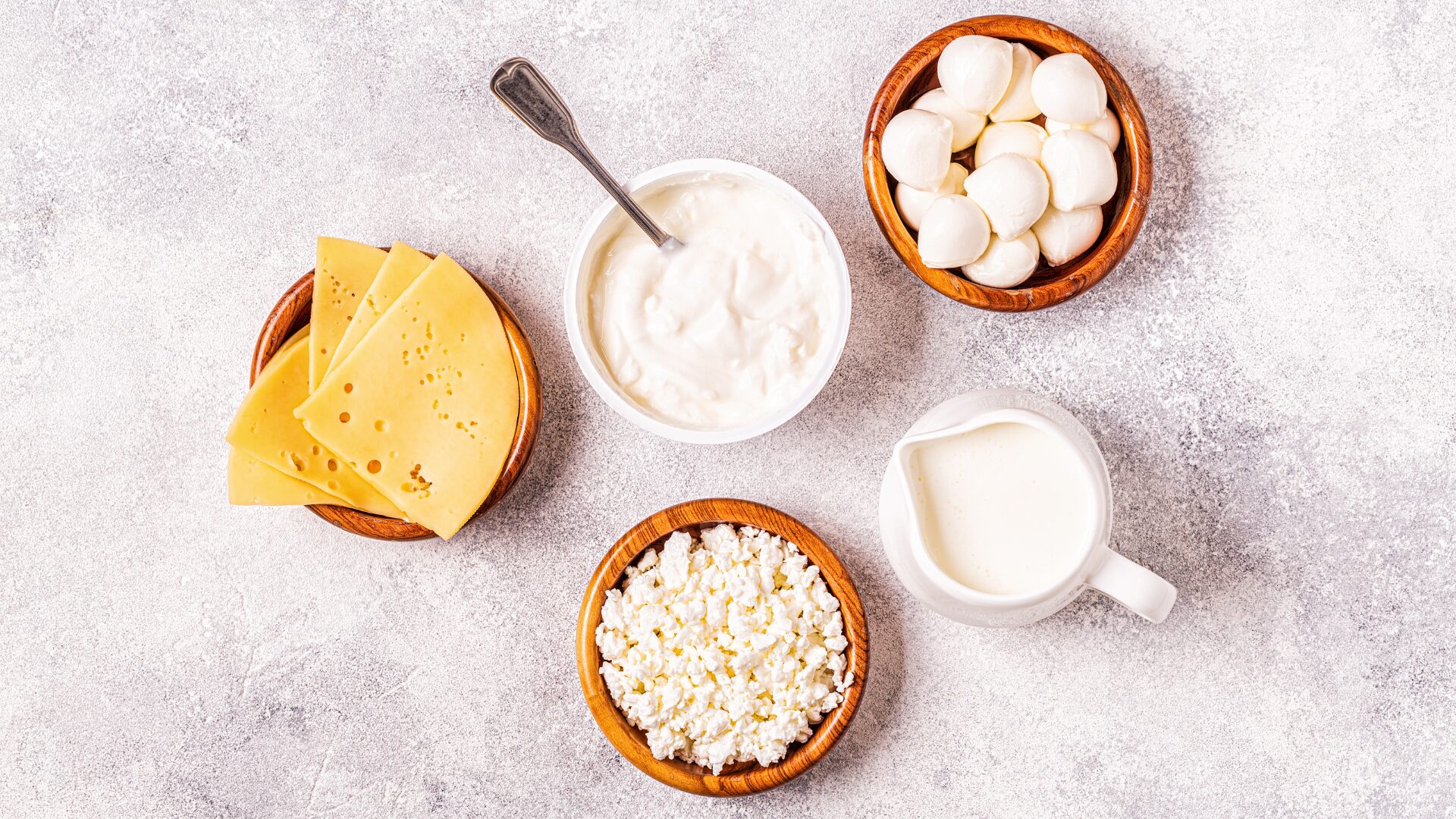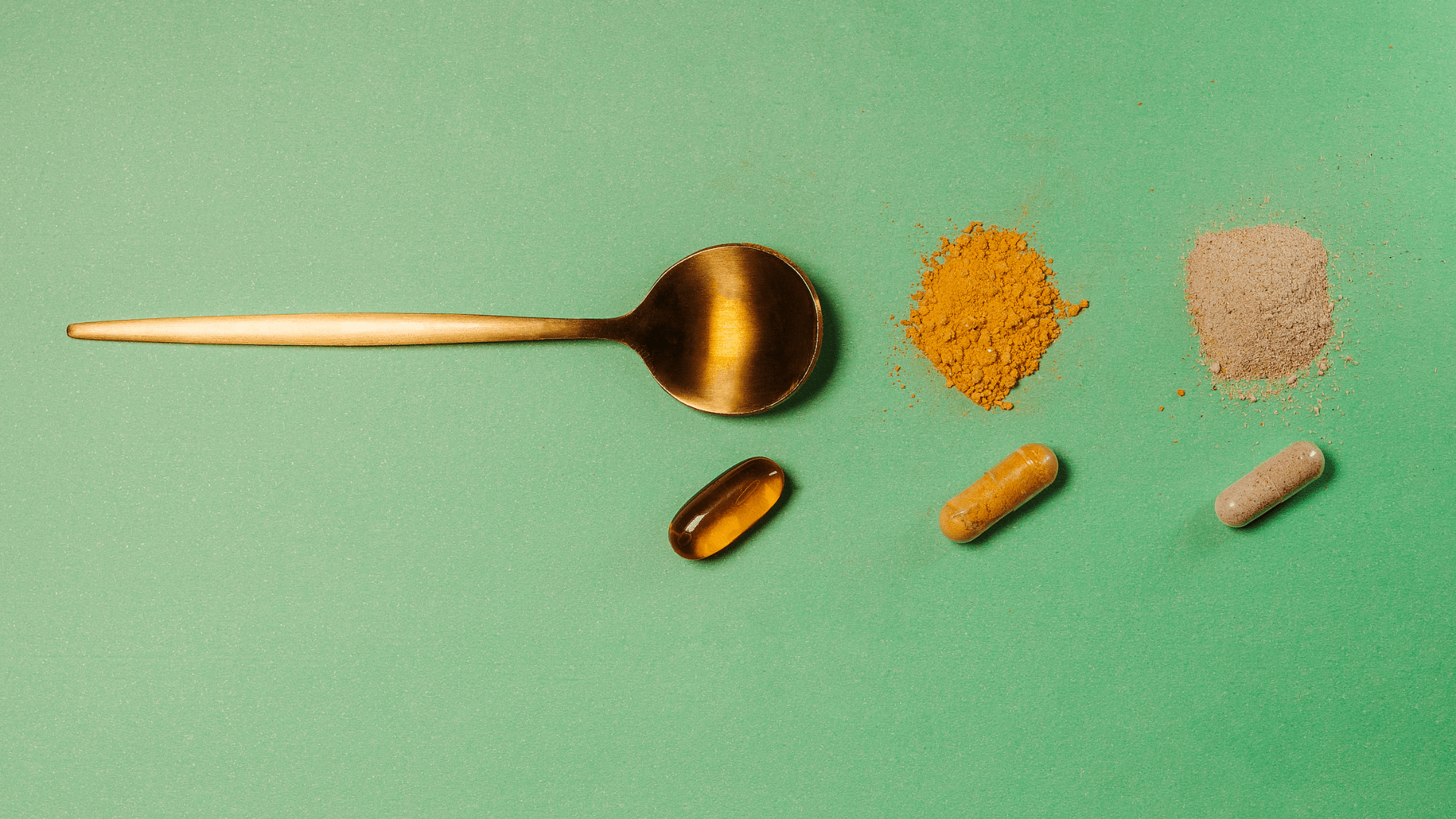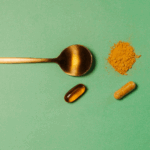Simple Tips for Reducing Dairy Consumption

If you’re looking to reduce your dairy consumption, you’ve come to the right place! Whether you’re lactose intolerant, following a plant-based diet, or just wanting to explore new options, finding alternatives to dairy products can be an exciting journey of discovery.
In this article, we’ll share some simple and practical tips to help you navigate this process and make the transition to a more dairy-free lifestyle easier than ever. So grab a cup of your favorite non-dairy beverage and let’s embark on this dairy-reducing adventure together!
Substituting Dairy Products
Use Plant-Based Milk Alternatives
When it comes to substituting dairy products, one of the easiest and most popular options is to switch to plant-based milk alternatives. There are a wide variety of plant-based milks available on the market, such as almond milk, soy milk, oat milk, and coconut milk. These alternatives not only offer a similar creamy texture to dairy milk but also provide different flavor profiles to suit your taste preferences. Whether you’re enjoying a refreshing glass of milk, pouring it over your morning cereal, or adding it to your coffee or tea, plant-based milk alternatives are a great dairy-free option to try.
Try Vegan Cheese or Spreads
If you’re a cheese lover but looking to reduce or eliminate dairy from your diet, fear not! There are many delicious vegan cheese and spread options available. These alternatives are typically made from plant-based ingredients like nuts, soy, or coconut oil, and offer a similar taste and texture to traditional dairy cheese. Whether you’re craving a gooey grilled cheese sandwich, a cheesy pasta dish, or a creamy spread for your crackers, vegan cheese and spreads can be a tasty and satisfying substitute.
Experiment with non-dairy yogurts
Yogurt is a popular dairy product enjoyed by many, but if you’re lactose intolerant or looking to cut back on dairy, non-dairy yogurts are a great alternative. Made from sources like almonds, coconuts, or soy, these yogurts can provide the same creamy and tangy flavor as regular yogurt. They can be enjoyed on their own, topped with fresh fruits and granola, or even used in smoothies and baking recipes. With a wide variety of flavors and textures available, you’re sure to find a non-dairy yogurt that suits your taste buds and dietary needs.
Reading Ingredient Labels
Look for hidden dairy ingredients
When trying to avoid dairy, it’s important to carefully read ingredient labels. Dairy ingredients can sometimes be hidden under different names or mentioned as derivatives, making it easy to overlook them. Some common hidden dairy ingredients to watch out for include whey, casein, lactose, and milk powder. By being vigilant and checking ingredient labels on food products, you can ensure that you’re making choices that align with your dairy-free goals.
Identify common dairy derivatives
In addition to hidden dairy ingredients, it’s also essential to be familiar with common dairy derivatives that may be listed on ingredient labels. These derivatives might not be immediately recognizable as dairy-related, but they are derived from milk. Some examples include lactose-free milk products, lactalbumin, and lactate. By familiarizing yourself with these terms, you can make informed choices and avoid consuming dairy derivatives unknowingly.
Cooking and Baking Without Dairy

Explore dairy-free recipes
Cooking and baking without dairy might seem challenging at first, but with a little creativity, you can discover a world of delicious dairy-free recipes. Many recipes can be easily modified by substituting dairy ingredients with plant-based alternatives. There are numerous online resources, cookbooks, and recipe apps available that focus specifically on dairy-free cooking and baking. By exploring and experimenting with these recipes, you can expand your culinary repertoire and enjoy dairy-free versions of your favorite dishes.
Use alternative ingredients in cooking and baking
When it comes to dairy-free cooking and baking, there are several alternative ingredients that can replace dairy products. For example, instead of using butter, you can use plant-based oils like olive oil, coconut oil, or avocado oil. These oils offer a similar richness and can be used interchangeably in most recipes. Additionally, ingredients like mashed bananas, applesauce, or tofu can be used as egg substitutes in certain recipes. By incorporating these alternative ingredients, you can still achieve delicious and satisfying results without dairy.
Replace butter in recipe with plant-based oils
Butter is a staple ingredient in many recipes, providing flavor, moisture, and richness. However, if you’re looking to reduce your dairy intake, you can easily substitute butter with plant-based oils. Coconut oil, for example, is an excellent option for baking as it provides a subtle coconut flavor and a smooth texture. Olive oil and avocado oil are also great alternatives that can be used in both cooking and baking. By swapping out butter for these plant-based oils, you can still enjoy the same delicious results in your culinary endeavors.
Eating Out Without Dairy
Choose dairy-free options on menus
When dining out, it’s important to be mindful of dairy in your meal choices. Thankfully, many restaurants now offer dairy-free options on their menus to cater to different dietary needs. Look for dishes that are specifically labeled as dairy-free or ask the server for recommendations. Some popular dairy-free options include salads, stir-fries, grilled vegetables, and plant-based protein options like tofu or tempeh. By selecting dairy-free options, you can enjoy a delicious meal without compromising your dietary preferences.
Ask about dairy-free alternatives
If a restaurant doesn’t explicitly mention dairy-free options on their menu, don’t hesitate to ask the staff about alternatives. Many establishments are accommodating and willing to make adjustments to accommodate dietary restrictions. For example, you can ask for your dish to be prepared without cheese or dairy-based sauces. By communicating your needs, you can ensure that your meal is free from dairy and enjoy your dining experience to the fullest.
Be mindful of hidden dairy in restaurant meals
While restaurants may offer dairy-free options, it’s essential to remain mindful of hidden dairy in meals. Some dishes may contain small amounts of dairy or use dairy-based ingredients in unexpected ways. For instance, soups, sauces, and dressings may contain cream or butter even if they don’t taste overtly creamy. By being cautious and asking about ingredients or preparation methods, you can avoid consuming hidden dairy and make choices that align with your dietary needs.
Managing Dairy Intolerance or Allergies
Identify symptoms of dairy intolerance or allergies
If you suspect you have a dairy intolerance or allergy, it’s crucial to be able to identify the symptoms. Common signs of dairy intolerance include bloating, gas, diarrhea, or stomach cramps after consuming dairy products. Allergic reactions to dairy can range from mild symptoms like hives or itching to more severe reactions such as difficulty breathing or anaphylaxis. By paying attention to how your body reacts to dairy, you can determine if you need to seek medical advice or adjust your diet accordingly.
Seek medical advice if necessary
If you experience persistent or severe symptoms after consuming dairy, it’s important to seek medical advice. A healthcare professional can perform tests to diagnose lactose intolerance or a dairy allergy accurately. They can provide guidance on managing your condition and offer personalized recommendations on adjusting your diet to ensure you meet your nutritional needs without consuming dairy. Remember, it’s always best to consult with a healthcare professional for a proper diagnosis and tailored advice.
Explore alternative sources of calcium and nutrients
Eliminating or reducing dairy from your diet doesn’t mean compromising on essential nutrients like calcium. There are various alternative sources of calcium that you can incorporate into your diet. Leafy green vegetables like kale and broccoli, fortified plant-based milks and juices, tofu, almonds, and chia seeds are all rich in calcium. Additionally, ensuring a well-rounded diet with a variety of fruits, vegetables, whole grains, nuts, and seeds can help you obtain a wide range of essential nutrients. By exploring and incorporating these alternative sources of calcium and nutrients, you can maintain a balanced and healthy diet without relying on dairy products.
Reducing Dairy Consumption Step-by-Step
Gradually decrease dairy intake
Reducing your dairy consumption doesn’t mean you have to completely eliminate it overnight. It can be helpful to take a gradual approach and make small changes over time. Start by identifying specific dairy products or dishes you consume regularly and try to find alternatives for them. For example, if you usually have milk with your cereal, consider switching to a plant-based milk for a week. Then, gradually decrease the amount of dairy you consume in other areas of your diet. By taking small steps, you can make a sustainable and lasting reduction in your dairy intake.
Set realistic goals
When setting goals for reducing dairy consumption, it’s important to be realistic and consider your individual circumstances. Assess your current dairy intake and set achievable targets for yourself. It could be as simple as committing to having one dairy-free meal a week and gradually increasing from there. By setting realistic goals, you can create a positive and manageable plan for reducing your dairy intake that fits your lifestyle.
Find suitable replacements for your favorite dairy products
One of the keys to successfully reducing dairy consumption is finding suitable replacements for your favorite dairy products. Experiment with different plant-based milk alternatives until you find one that you enjoy. Look for vegan cheeses or spreads that closely mimic the taste and texture of your favorite dairy cheese. Additionally, explore non-dairy yogurts, ice creams, and butters to find alternatives that satisfy your cravings. By finding suitable replacements for your favorite dairy products, you can still enjoy the flavors and textures you love while reducing or eliminating your dairy intake.
Increasing Awareness of Dairy Usage
Educate yourself about the dairy industry
To fully understand the impact of your decisions, it’s important to educate yourself about the dairy industry. Learn about the processes involved in producing dairy, the environmental effects, and the ethical concerns associated with dairy farming. By arming yourself with knowledge, you can make informed decisions about your dairy consumption and potentially advocate for more sustainable and ethical practices.
Learn about the environmental impact of dairy production
The production of dairy has a significant environmental impact, particularly in terms of greenhouse gas emissions, water usage, and land degradation. By learning about these environmental effects, you can gain insight into how your dairy consumption contributes to these issues. This knowledge can motivate you to make conscious choices to reduce your dairy intake and support environmentally friendly alternatives. By increasing awareness of the environmental impact, you can play a part in creating a more sustainable future.
Joining Dairy-Free Communities
Connect with like-minded individuals
Joining dairy-free communities can provide valuable support and connections with like-minded individuals. Look for local dairy-free meetups, events, or support groups in your area where you can meet people who are also reducing or eliminating dairy from their diets. Sharing experiences, tips, and recipes with others who are on a similar journey can be both inspiring and empowering.
Join online forums or support groups
If local dairy-free communities aren’t readily available, consider joining online forums or support groups. These virtual spaces allow you to connect with people from all over the world who are navigating the same challenges and choices as you. Online forums and support groups can be an excellent resource for getting advice, sharing experiences, and finding support on your dairy-free journey.
Share tips and experiences with others
As you embark on your dairy-free journey, remember that your experiences and tips can be valuable to others. Share your discoveries, recipe successes, and challenges with friends, family, and your dairy-free communities. By actively participating and sharing, you can contribute to building a supportive and knowledge-sharing network of individuals committed to dairy reduction.
Planning Dairy-Free Meals and Snacks
Plan your meals to include non-dairy options
To ensure you have dairy-free options available throughout the week, it’s helpful to plan your meals in advance. Consider incorporating non-dairy sources of protein, like legumes or tofu, into your main dishes. Fill your plate with a variety of colorful vegetables and whole grains to create satisfying and nutritious meals. Planning meals ahead of time allows you to have the necessary ingredients on hand and eliminates the need to rely on dairy products as last-minute additions.
Prepare dairy-free snacks for on-the-go
Snacks can be a potential stumbling block when trying to reduce dairy intake, especially when hunger strikes on the go. To avoid falling back into old habits, prepare dairy-free snacks to have on hand. Fill your pantry with options like nuts, seeds, fresh fruits, and vegetable sticks. You can also make homemade snacks like energy balls or granola bars using alternative ingredients. Having convenient and delicious dairy-free snacks readily available will help you stay on track and satisfied throughout the day.
Experiment with new recipes and flavors
Reducing dairy consumption provides an excellent opportunity to explore new recipes and flavors. Embrace the challenge of cooking and baking without dairy by experimenting with different ingredients and cuisines. Explore international cuisines that traditionally use limited dairy or have dairy-free alternatives readily available. This exploration allows you to discover new flavors, expand your culinary skills, and find exciting and delicious dairy-free dishes that you can enjoy.
Seeking Professional Advice
Consult a nutritionist or dietitian
If you’re unsure about how to navigate dairy reduction while maintaining a balanced and healthy diet, consider consulting a nutritionist or dietitian. These professionals can provide personalized guidance based on your specific needs, dietary restrictions, and health goals. They can help you develop a meal plan that ensures you’re obtaining all the necessary nutrients and can offer advice on appropriate portion sizes, alternative food options, and potential supplements if needed.
Get personalized guidance on dairy reduction
Each individual’s nutritional needs are unique, so it can be beneficial to seek personalized guidance on dairy reduction. A nutritionist or dietitian can provide you with an in-depth analysis of your current dairy intake and recommend suitable modifications based on your health and lifestyle. Whether you’re reducing dairy for health reasons, ethical concerns, or environmental impact, seeking professional guidance can help you navigate the process with confidence and ensure optimal health.
Ensure a balanced and healthy diet without dairy
Removing or reducing dairy from your diet requires careful consideration to ensure you’re still getting all the necessary nutrients. A nutritionist or dietitian can help you create a well-balanced meal plan that includes appropriate alternatives and substitutions to meet your individual requirements. They can also address any concerns you may have about specific nutrients typically found in dairy, such as calcium, vitamin D, or protein. By seeking professional advice, you can confidently maintain a balanced and healthy diet without dairy.
Share:
Related Posts

Thai Red Curry Chicken with Rice
This Thai red curry chicken with rice recipe is rich, creamy, and full of bold flavors. A quick and satisfying one-pan meal that’s perfect for weeknight dinners.

Building Confidence Through Strength Training: A Powerful Journey for Women
Discover how building confidence through strength training empowers women physically and mentally. Learn how lifting weights can help you feel stronger, healthier, and more self-assured.

Vegetable Dumplings
Make your own delicious vegetable dumplings at home with this easy recipe. Packed with fresh veggies and flavor, these dumplings are perfect for a healthy appetizer or meatless meal.

Ashwagandha & Maca Root: Do They Help With Hormone Balance?
Curious about ashwagandha and maca root for hormone balance? Discover how these adaptogenic herbs may support women’s hormonal health, stress relief, and energy naturally.






